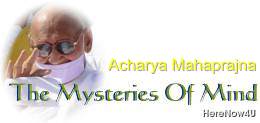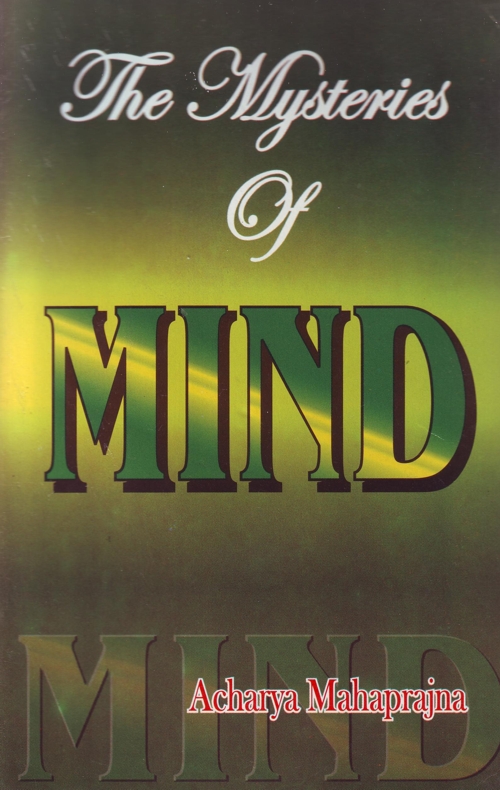
The process of self-exertion goes on revealing bits of truth as we proceed on. One of these bits is the feeling of friendliness towards every living being. The purpose of sadhana is not to produce weapons of destruction. Its purpose is to produce means of doing good to others and to extend the area of friendliness.
If we did not undertake the search for truth, we are likely to become a prey to the ever-increasing feeling of enmity. But once we have entered into the world of the spirit, we begin to feel that we have no enmity towards anybody. Sometimes difference of opinion breeds enmity. We take him to be an enemy who behaves differently from us. We take those whose culture and civilization differ from ours to be our enemies. We take those to be our enemies who refuse to behave in the way we expect them to behave. Let us remember the truth that there is nothing in the world, which is not opposed by something or the other. Where there is thesis, there is antithesis also. Not only that. Where there is no antithesis, there is no thesis as well. Life is a dialectical process. Bhagavan Mahavira, after a great self-exertion, came to the conclusion that there are many facets of truth. He called this by the name anekanta vada or the doctrine of multiplicity of approaches to truth. This doctrine is an admission of the value of differences and opposition. It asserts that both thesis and antithesis are true in their own spheres. We have to admit both or to deny both.
We engaged ourselves in the exercise of samavrttisvasa. One of the nostrils inhales air and the other exhales it. The Hatha Yoga speaks of Ida and Pingala. There are three currents of vital energy (prana):
- Ida,
- Pingala
- Susumna.
The current of prana, which flows into the body through the right nostril, is called Ida. That which flows into the body through the left nostril is called Pingala. The current of vital energy, which flows in the body through the spinal cord, is called Susumna. The ida current is said to be associated with the moon. It is cold and has an even flow. Pingala is said to be associated with the sun and is hot. The Susumna current is neither hot nor cold.
Ida and Pingala are the opposites of each other. The former is cold and the latter is hot, and yet they are mutually complementary. If they were not so, life will come to a standstill. They are governed by the principle of the unity of opposites. They are a model of friendliness and we may learn a lesson from them in the give-and-take of life.
The exercise of samavrttisvasa is also an exercise in friendliness. Ida's coolness and Pingala's heat are necessary for us. Both are useful. If we felt heat while inhaling through the right nostril, we should stop it and begin inhaling through the left. By doing so we will begin to feel cold. If the left nostril is in haling and we want to avoid the feeling of cold, we should begin inhaling through the right nostril. This will make us feel heat in the body. The svara sastra (the science of breathing) discusses this process at length. Inhaling through one nostril produces calm whereas exhaling through another produces excitement. Both have their corresponding effects. One is useful in peaceful activities while the other is useful in exciting work. Both function in their own way without interfering with each other.
According to the Jain a doctrine pudgala (matter) produces four sense-contacts or sensations, cold, hot, rough and smooth. These are the four basic sensations. Every material object produces these basic sensations. It is because of these effects that it is useful for us. Cold and heat on the one hand and rough and smooth on the other are pairs opposing each other. Still they are found together in every single structure. We find all things in the world in mutually opposite pairs. There can be no creation without pairing. Pairing may be viewed as the unity of opposites. Electricity is also a unity of opposites, positive and negative. When the opposite currents unite, they produce light. These opposites are not like enemies, which destroy each other. They behave like friends and cooperate with each other. The entire world-process is useful to us because of its internal contradictions.
The brain is the most important part of the living body. It has two parts, the left hemisphere and the right hemisphere. The left hemisphere controls the right hand and right hemisphere controls the left hand. The former controls the whole of the right-hand part of the body and the latter the entire left-hand part of the body. Each part of the body and its activities are controlled by that part of the brain, which is situated in its opposite part.
The material world is a combination of opposites. Why should we, therefore, think our opposite numbers to be our enemies? Friendliness is a compromise between mutually opposed entities or forces or a synthesis of opposites. If we thought friendliness - to consist only in behaving nicely and in working together, we will confine it into very narrow limits, In such a case only few people will be friends and the ideal of friendliness towards all remain an empty ideal. The positive aspect of friendliness consists in not being unfriendly towards those also who differ from us in opinion as well as in conduct. This will encourage in us an unlimited attitude of friendliness and we will be friendly not only towards sentient beings but towards insentient beings also.
The success of democracy depends upon effective opposition. A democratic government will not be able to function successfully without the opposition. Government without an effective opposition will become wayward and autocratic. The opposition remains watchful of what the government does.
 Acharya Mahaprajna
Acharya Mahaprajna

